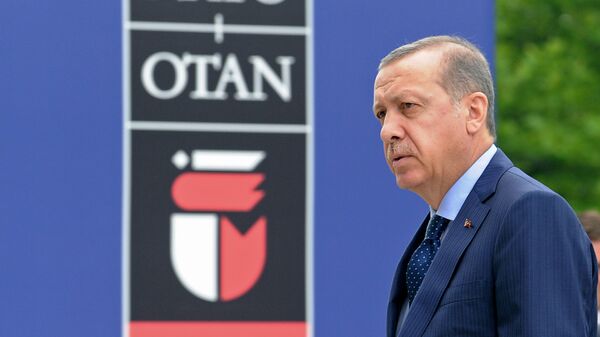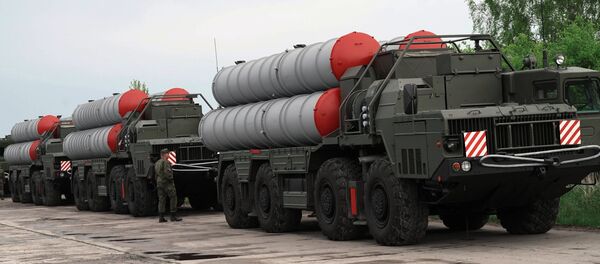In a statement released on Wednesday following its summit in Brussels, NATO vows to protect Turkey's southern border.
The statement also says that NATO “continues to monitor and assess the ballistic missile threat from Syria," and that “tailored assurance measures for Turkey to respond to the growing security challenges from the south contribute to the security of the Alliance as a whole, and will be fully implemented.”
In an interview with Sputnik, Hasan Unal, a foreign relations expert at Atylym University in Ankara, criticized the vague notion of “threat” mentioned in the declaration, adding that the main threat to Turkey comes from Kurdish YPG forces and their “sponsors in the US.”
“There is no threat to southern Turkey coming from the Syrian army. The missiles launched at our territory from Syria came from territories controlled either by Daesh or militants of the Kurdistan Workers Party even before the start of the Turkish military operation in Afrin. This means that the biggest threat to Turkey in the south comes from the Kurdish units and their US supporters. Turkey should have rejected such a vague description of this threat contained in the NATO summit’s declaration,” he said.
He added that by approving the declaration’s provisions, Turkey finds itself in the position of a country which supports NATO’s plans of encircling and pressuring Iran.
Cahit Armagan Dilek, a political scientist and the head of the university “Turkey in the 21st Century,” pointed to the declaration’s openly anti-Turkish slant, aimed at “encircling Iran and bringing pressure to bear on it by using Turkish territories and the introduction of an additional military contingent into Turkey.”
"In future, we may see NATO forces deploying along our southern border with Syria. It looks like NATO and Turkey look differently at what a ’terrorist threat’ is all about. The declaration says that at least three missiles fired at Turkey from Syria had actually been launched by the Syrian army and Iran. In the final account, the ‘terrorist threat,’ as it is termed in the NATO declaration, may transform into an ‘Iranian threat,’” the expert noted.
Dr. Dilek said that the Rapid Response task force that NATO plans to deploy, ostensibly to ensure Turkey’s security in the south, may in fact target Iran.
He added that to consolidate its positions in the region, NATO could deploy its forces east of the Euphrates and use them as a buffer between Turkey and YPG units.
READ MORE: Turkey's Presidential Candidate Says NATO Fails to Ensure Nation's Security
“Some of the NATO forces may be stationed to the west of the Euphrates, inside Turkey. With the Syrian army poised to advance on Idlib in August, the local jihadists may move towards Turkey and Afrin, thus destabilizing the situation in the region. In this case, NATO is likely to offer us help. However, we should also bear in mind the fact that the NATO forces deployed inside Turkey may be used against Iran. Turkey should take its time before it agrees to let foreign forces in, because we have absolutely no idea exactly when these forces will move out,” he explained.
He mentioned NATO’s naval forces deployed in the Aegean Sea as part of an EU-Turkish agreement on refugees in order t6o stem the tide of Syrian refugees fleeing to Europe.
“If, in addition to this, we have NATO land forces coming in, we may eventually have problems sending them back. We have a similar situation with the Incirlik base. But this time there may be more foreign troops stationed on our territory. Before the start of Operation Euphrates Shield, the Americans kept saying they needed 30,000 soldiers to secure the border between the [Syrian cities of] Jarabulus and Azaz,” Dr. Dilek noted.
The views expressed in this article are solely those of the speaker and do not necessarily reflect the official position of Sputnik.



